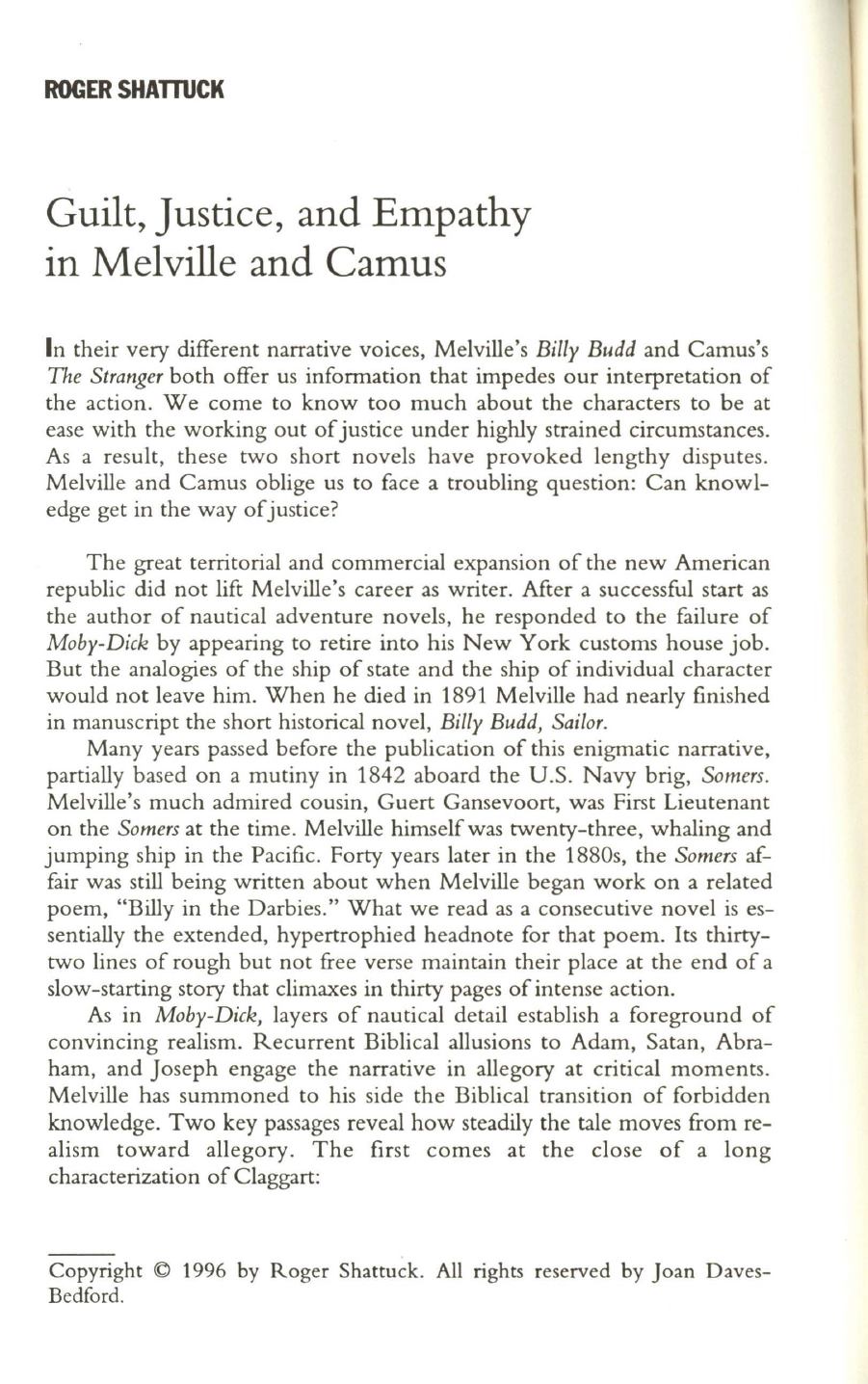
ROGER SHATTUCK
Guilt, Justice, and Empathy
in Melville and Camus
In
their very different narrative voices, Melville's
Billy Budd
and Camus's
The Stranger
both offer us information that impedes our interpretation of
the action. We come to know too much about the characters to be at
ease with the working out ofjustice under highly strained circumstances.
As a result, these two short novels have provoked lengthy disputes.
Melville and Camus oblige us to face a troubling question: Can knowl–
edge get in the way ofjustice?
The great territorial and commercial expansion of the new American
republic did not lift Melville's career as writer. After a successful start as
the author of nautical adventure novels, he responded to the failure of
Mohy-Dick
by appearing to retire into his New York customs house job.
But the analogies of the ship of state and the ship of individual character
would not leave him. When he died in 1891 Melville had nearly finished
in manuscript the short historical novel,
Billy Budd, Sailor.
Many years passed before the publication of this enigmatic narrative,
partially based on a mutiny in 1842 aboard the
u.s.
Navy brig,
Somers.
Melville's much admired cousin, Guert Gansevoort, was First Lieutenant
on the
Somers
at the time. Melville himself was twenty-three, whaling and
jumping ship in the Pacific. Forty years later in the 1880s, the
Somers
af–
fair was still being written about when Melville began work on a related
poem, "Billy in the Darbies." What we read as a consecutive novel is es–
sentially the extended, hypertrophied headnote for that poem. Its thirty–
two lines of rough but not free verse maintain their place at the end of a
slow-starting story that climaxes in thirty pages of intense action.
As in
Mohy-Dick,
layers of nautical detail establish a foreground of
convincing realism. Recurrent Biblical allusions to Adam, Satan, Abra–
ham, and Joseph engage the narrative in allegory at critical moments.
Melville has summoned to his side the Biblical transition of forbidden
knowledge. Two key passages reveal how steadily the tale moves from re–
alism toward allegory. The first comes at the close of a long
characterization of Claggart:
Copyright
©
1996 by Roger Shattuck. All rights reserved by Joan Daves–
Bedford.


